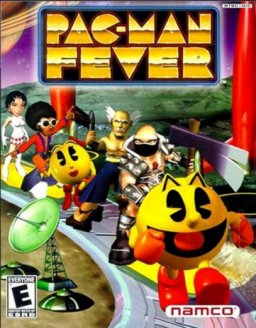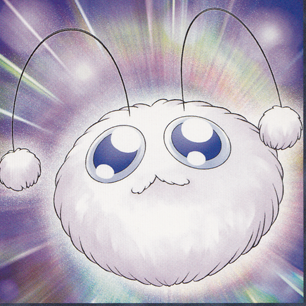Mini-games – along with knowledge of the board at higher levels of play – are necessary to getting a good time, as they're tied to progression on the board. (if you want to practice but have an empty save file, you can check out the resources page for a PS2 memory card with all mini-games unlocked)
This progression is as follows (not counting 2x or 3x multipliers; spring, return, surprise, or staging squares; or landing on occupied spaces and having to keep moving):
1st place: 5 spaces 1st place (tied): 4 spaces 2nd place: 3 spaces 2nd place (tied): 2 spaces 3rd place: 2 spaces 3rd place (tied): 1 space 4th place: 1 space 4th place (tied): 1 space
Not only do you often want to win mini-games to move a full 5 spaces or throw the game to only advance one space, but you also sometimes want to thread the needle to move 2 or 3 spaces (moving 4 by tying for 1st place is generally extremely difficult to get outside of co-op games, even on mini-games over which you have very good control). This sort of trick is especially prominent at the beginning of a board. For example, on Short boards, the order is Start -> Ghost -> Token -> Token game -> Challenge -> Revenge -> Surprise -> Spring -> Store. Two good opening strategies for a short board involve winning first to get the revenge square (+10 tokens for a total of 30), then moving either 2 or 3 squares the next round to land on the spring or the store square, respectively. This means that at high levels of play, you're not just going to want to be able to throw games: you're going to want to be able to throw them with finesse.
That being said, in this guide, I'm going to be going over the Backlot games. No matter which board you play, you will be running into these, and they're often the easiest to win after some practice, so it's crucial to know them. There are six of these total. I won't be going over that whole "throwing them with finesse" thing because a) if you're reading this guide you're probably not ready to do it consistently, \b) even I can only do this 1/2 of the time on a good day with good mini-games, c) I'm not even sure how you would formalize something so inconsistent into a written guide, d) it's risky and situational, and e) you can get a perfectly respectable time without doing this or by only doing it at the very start of the board, at which point consistency isn't much of an issue.
In addition to this guide, I suggest you read the instructions in full within the game (you can scroll to the right in that menu to get more advanced instructions).
==Raise the Flag== Duration: 30 seconds (variable)
Raise the Flag is interesting in that it's one of two mini-games (Bell Tower Climb being the second) where you can actually end the mini-game early. If you play fast enough, you can end the mini-game after only 17 seconds, meaning 13 seconds of free timesave. The only real tip I have to offer here is to pace yourself. The only that's going to make any real difference in how fast you end the level is the very last (fifth) one assuming you get the first four, and even then, a half-second lost to a slow Raise the Flag is nothing in the current state of this game. Meanwhile, if you mess up even a single button in one of the sequences, your flag will not move at all. The AI will very rarely get to the top of the flagpole on the fifth sequence, and even when they do, you'll generally have been faster than them on the previous sequences, so your flag will hit the top first.
==Cart Dash== Duration: 30 seconds
Of all the Backlot games, Cart Dash is probably the least consistent, but that's less because Cart Dash is inconsistent and more because the rest are obscenely consistent. Your objective is to drive through a narrow path to collect fruits (cherry=1, orange=5, banana=10, breakable obstacle=-1). There will always be either a fruit or a breakable obstacle right at the front of the lot. Either way, don't go for it, as you can get ahead of the crowd by going straight into the lot, and as you (as player 1) start at the far left of the screen, they're almost certain to get it before you do. A good score here is around 150 (though you can get 200 with some good RNG and try-harding), while a good score for the NPCs is around 110 or 120.
Some general tips: 1) don't try to butt heads with other carts. This can sometimes bug out the cart due to clipping, and if it does, there's a good chance it'll send you way back and take you a while to catch up. 2) ramps aren't always the bee's knees. Ramps have three guaranteed fruits, which can be nice, but it can also be a waste of time. Since you're locked in, if the fruits end up being mediocre (e.g. cherry, orange, cherry, 7 points) you can lock yourself out of the fruits on the ground. Likewise, they can be difficult to see coming, you can clip off of them if you're too far to the left or the right thereby missing it, and they're much more competitive than fruits on the ground. If someone enters the ramp even a few frames before you do, they get all the fruits while you get nothing. 3) hitting obstacles isn't the end of the world. It's only -1 point, and you can get right back to the head of the pack quickly, so just keep trucking on and don't let it discourage you. 4) treat it less like a racing cart and more like a shmup, as that's basically how it controls. 5) don't focus on the other players' scores. This is true for pretty much all mini-games (and partly why it's so difficult to throw with finesse for 2 or 3 spaces), but I find it's especially true for this one that trying to peep at others' scores will only lose you points and confer no real benefit (maybe you could lock 2nd place into a corner near the very end, but that's about it).
Note: Unlike the others here, Cart Dash can actually be something of a different beast in a 1v1 challenge. Basically, if you want, you can rack up a bunch of points early, then shove your opponent into a corner to run out the clock. This is doable 1) because there are only 15 seconds and 2) because you only have one opponent to worry about.
==Dart Toss== Duration: 30 seconds
There's not much, I think, to say about Dart Toss except that you shouldn't ever lose as long as you've practiced some. Assuming you're Player 1, your little arrow will be coming down from the top and then going to the right. You don't ever want to be going back and forth: just down, then to the right. If you miss, you still have plenty of chances; meanwhile, going back and forth to try to land the shot only wastes time and is actually more difficult than if you learn a rhythm to pressing the button. As long as you can consistently hit the center (black ring=20, red center=30), you're going to win the mini-game. If you're just learning, over/undershoot the vertical axis, and need a backup, the banana strips and their circles (10 and 20 points, respectively) are what you want to be aiming for. As long as you have even some practice, this is one of those mini-games that should make you breathe a sigh of relief when it shows up on the last staging square.
==Ghost Whackers== Duration: 30 seconds
This one's fairly easy even with no practice, as you have a huge advantage over the AI: whereas they have to rotate around a circle to get to the next ghost, you can snap your analog stick to directly where the ghost is. If you've ever used the quick select wheel in a Ratchet & Clank game, you'll be right at home. The game starts out pretty slow and allows you to hit the ghosts in a basically linear order, but sometime between the 15 and 10-second mark, you're going to have to start choosing which ghosts to hit, prioritizing the red and yellow ones over the green (3, 2, and 1 points, respectively). A good score here is somewhere around 80, whereas the AI will often get under 50. I know I said I wouldn't mention finessing, but this actually is a pretty good one to do it in. Since the pace picks up so drastically at the end, you can test the waters, and if it's going to be (relatively) easy to finesse, then you can, and if not, you can shoot back up from behind and place 1st, because this is where the bulk of the ghosts are.
==Vend-A-Fruit== Duration: 30 seconds
Vend-A-Fruit is another game where rhythm is far more important and much easier than relying strictly on visuals. You have a marker moving clockwise on a vending machine, and you have to light up all six; hitting an already-lit button will dim it. The vending machine slows down if you don't do anything but rapidly speeds up if you press it. Starting from the top left and working in a clockwise motion (you can draw this out if you'd like), I'll number these six buttons 1, 2, 3, 4, 5, and 6 (Apple, Banana, Cherry, Pear, Strawberry, Orange), and I'll refer to the marker going around once as a 'cycle', while each time the vending machine dispenses fruit will be a 'round'. Say we start out with '3' (Cherry), which is, in my opinion, easy to get if you press the button right at the start of the mini-game. The easiest and most consistent way to play this is to hit one button every cycle, and you want it to be the subsequent one. So for example, starting with 3, we'd go 3, 4, 5, 6, 1, 2, which would activate the vending machine and undim all the lights. If you'd like, you can keep using this exact sequence. However, a minor optimization actually allows us to maintain consistency while sneaking another full vending machine round in by – each round – starting with n-1 (mod 6, if you want to be pedantic) of what we started with previously. So for example, if we start with the cherry and complete a round, then we could start with '2' (Banana) the next round, so on and so forth. This won't make a difference except in rare cases, but when you can do it with the exact same consistency, it's worth it to learn it this way. If you're doing this consistently, you should be at the very last second by the time you get through your last round, at which point you can mash buttons just to get a few extra points (and even complete an extra round if you're incredibly lucky).
Once you get this pattern down, you should be consistently scoring over 130. I've only ever had an NPC beat me once using this pattern out of dozens upon dozens of times, and even then it wasn't by much.
==Fruit Mash== Duration: 30 seconds
This mini-game is interesting in that it goes from being one of the hardest mini-games to nearly the easiest once you understand the rhythm. Your main goal is to get as many bananas in a row as you can, since they confer 10 points apiece, and getting multiple in a row grants a multiplier (first 2x, then 3x). You can get up to a score of 490, and this can be done with relative ease. A good score for the NPCs, meanwhile, is something just north of 100, so there's always plenty of breathing room.
You want to ignore all other fruits, as they're worth far less than bananas (cherry=1, strawberry=2, orange=3, apple=4, banana=10). The fruits slow down between hammer swings, so you can wait through 2 cycles to get bananas in a row consistently and still win the mini-game easily. However, with a consistent rhythm, you can get a banana every cycle. If you want to one-cycle it, visual cues are pretty much non-existent except subconscious ones. However, if you want to two-cycle it, you can reasonably use the apple as a visual cue to smash the hammer, since the banana comes next.
In general, I would recommend one-cycling instead of two cycling, as once you have a rhythm, it's substantially easier than consciously trying to figure out when to swing the hammer. If you can get this down, Fruit Mash goes from a run-ender to something of a 30-second breather.




